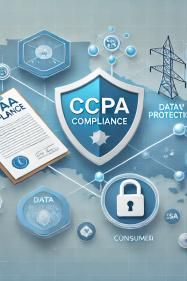Effective compliance management is essential for organizations to meet legal obligations, protect their reputation, and maintain operational integrity. As regulations evolve, businesses must adopt proactive strategies to ensure they remain compliant while minimizing risks. In this article, we explore key strategies for effective compliance management that can help your organization stay ahead of regulatory requirements.
1. Understand Regulatory Requirements
The first step to successful compliance management is understanding the specific regulatory landscape your organization operates within. Different industries face different compliance demands, such as GDPR for data protection or HIPAA for healthcare. Conduct a thorough analysis to identify relevant regulations and stay updated as new laws emerge.
A dedicated team or compliance officer can help monitor these changes, ensuring your organization adapts accordingly.
2. Implement Robust Policies and Procedures
Once regulatory requirements are clear, develop comprehensive policies and procedures to address them. These policies should clearly outline how employees must handle compliance-related tasks, such as data protection, cybersecurity, and reporting.
Ensure that these procedures are well-documented, easily accessible, and regularly updated. By doing so, your organization can ensure consistency in compliance management across all departments.
3. Conduct Regular Training and Awareness Programs
Ongoing employee training is critical to maintaining compliance management standards. Regularly train your staff on the latest regulations, policies, and security practices. Cybersecurity awareness training is particularly important, as it equips employees with the knowledge to avoid compliance breaches related to data security.
Interactive training programs and simulations can significantly improve retention and encourage employees to actively contribute to compliance efforts.
4. Use Compliance Management Tools
Leverage compliance management software and tools that automate tasks such as audits, reporting, and monitoring. These tools help streamline processes, reduce human error, and ensure consistent adherence to regulatory standards. Investing in the right tools can save time and improve overall compliance efficiency.
Conclusion
Effective compliance management is not just about avoiding penalties—it’s about safeguarding your organization’s integrity and operational success. By understanding regulations, implementing clear policies, training employees, and utilizing compliance tools, your organization can stay compliant and thrive in an ever-changing regulatory environment.

